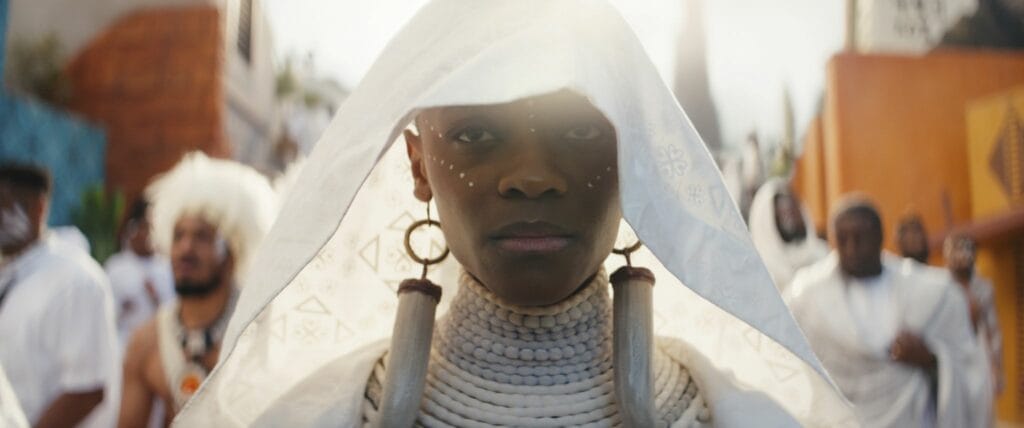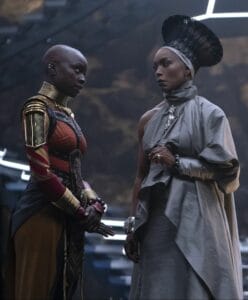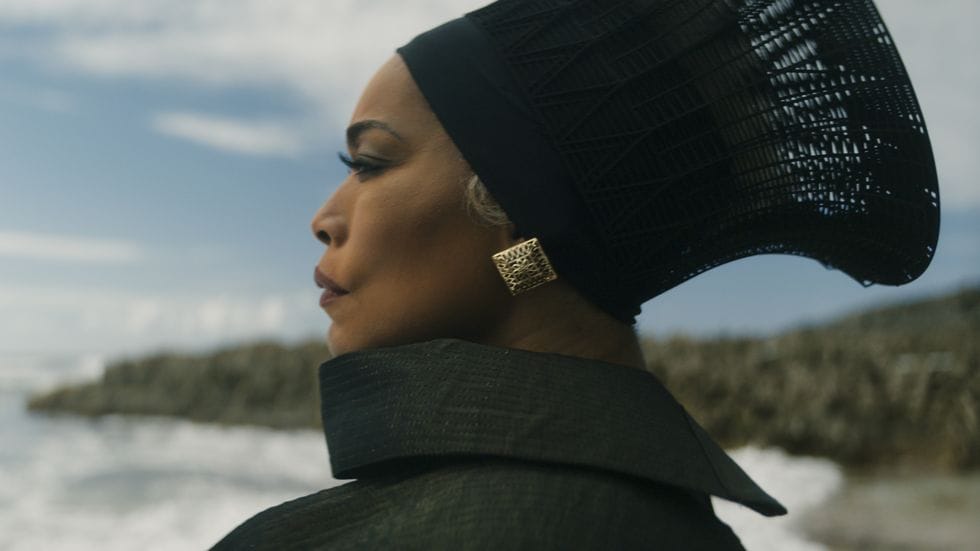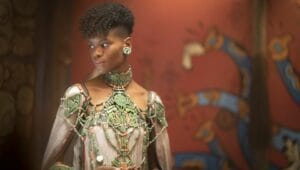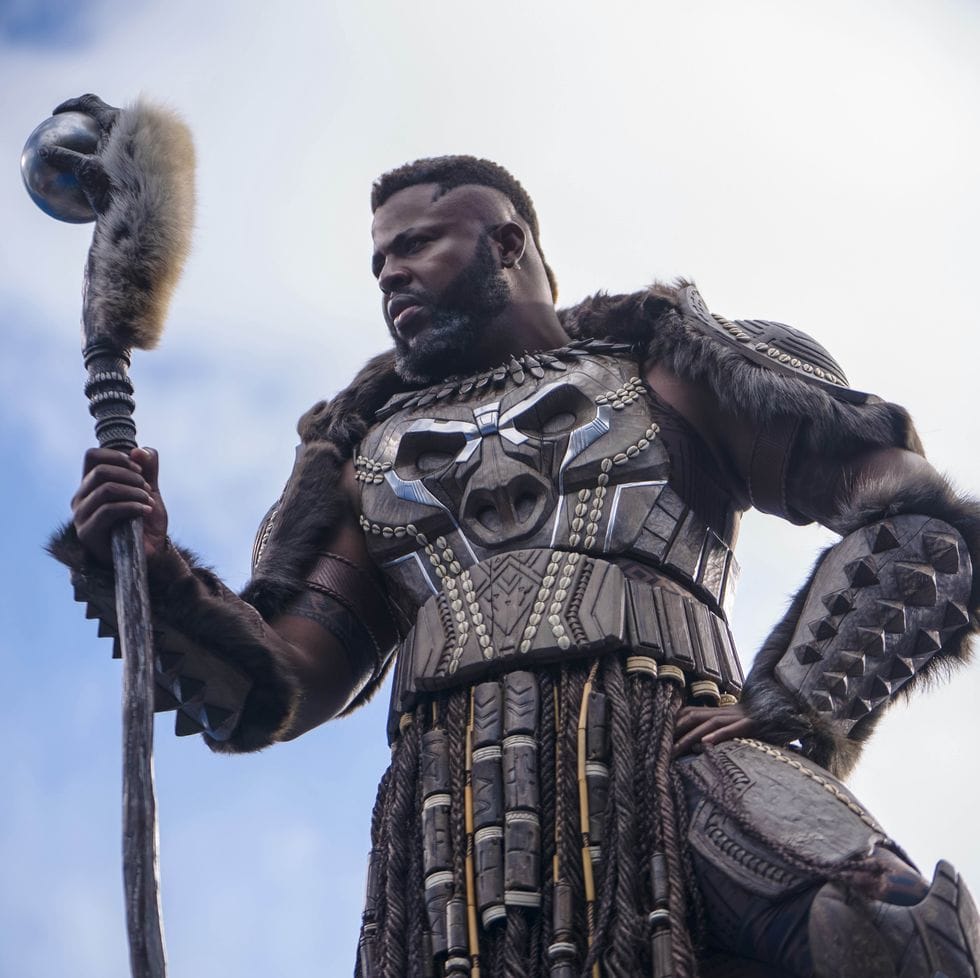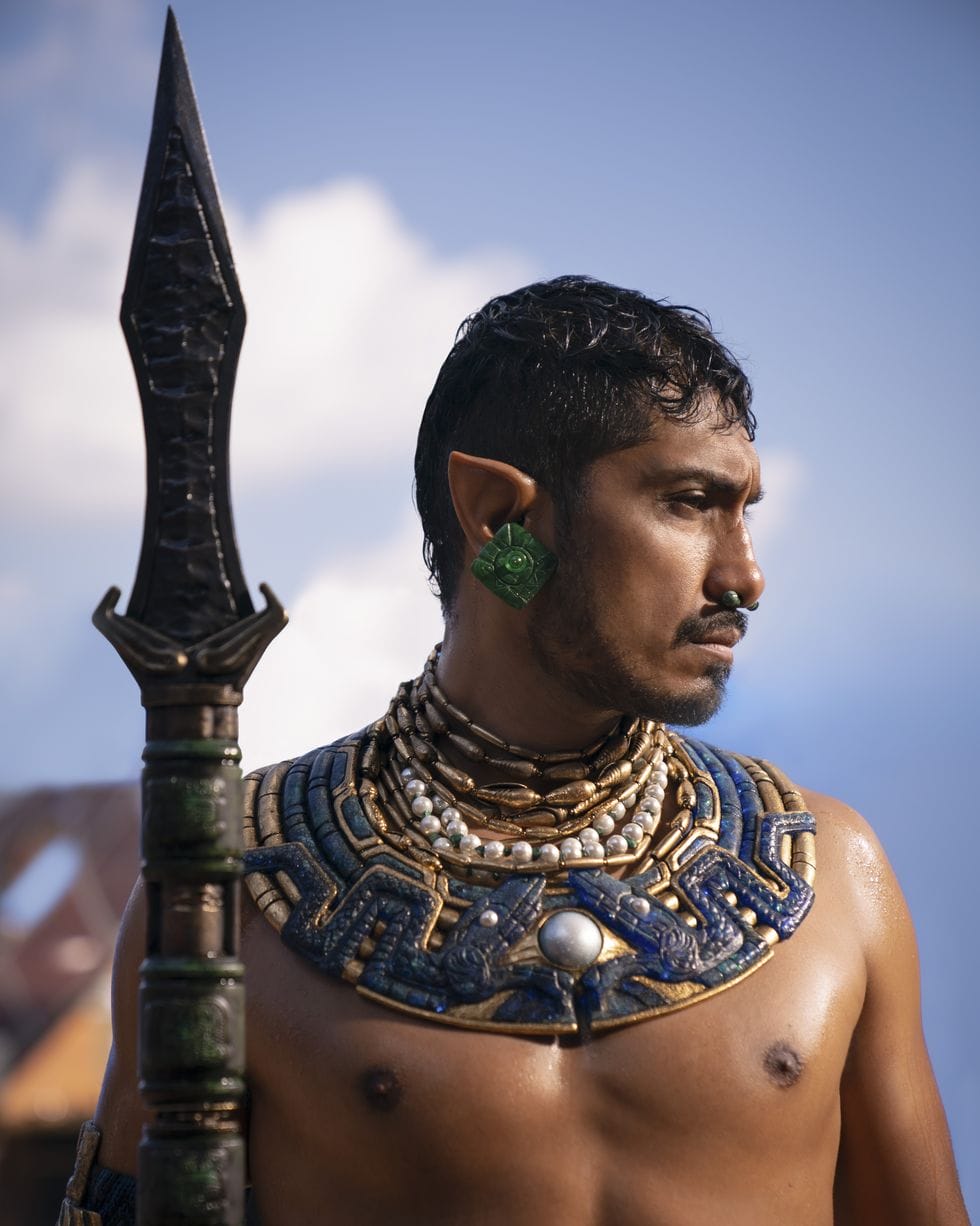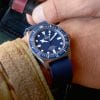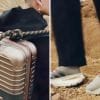BAZAAR.com catches up with the film’s hair and makeup leads for a closer look at their process.
Words by Tiffany Dodson
Black Panther is nothing short of groundbreaking, with its main hero role personified by the late actor Chadwick Boseman. Now, four years after the original was released, a new champion arises to protect and defend Wakanda in the latest installment, Black Panther: Wakanda Forever.
With a cast comprised mainly of people of color, including actors Angela Bassett, Lupita Nyong’o, Letitia Wright, Danai Gurira, Dominique Thorne, Winston Duke, and Michaela Coel, Black Panther: Wakanda Forever is a celebration of the multi-faceted nature of Black and Brown beauty. Celebrity hairstylist Camille Friend and makeup artist to the stars Joel Harlow helmed the beauty looks seen in the new film, which were largely based on a combination of Mayan and African cultures.
Ahead of its highly anticipated release, Friend and Harlow share an inside scoop on how their creative vision for Black Panther: Wakanda Forever came to life, their short list of on-set holy-grail products, and the most challenging part about executing these otherworldly hair and makeup designs.
How are the hair looks in Black Panther: Wakanda Forever similar or different from the ones seen in the first film?
Camille Friend: The common thread from the first Black Panther to Wakanda Forever is that Black hair is beautiful. In Wakanda Forever the hair designs are establishing the passage of time and the death of T’Challa.
Joel Harlow: The makeup looks in Wakanda Forever are similar in overall approach to the looks seen in the first film. We didn’t want to stray into looks that were too different because the looks we already established resonated so strongly with the fans. However, they do differ from the first film in technical methodology. The looks also differ with character evolvement and change to reflect the current state and age of each character. Additionally, we also got the opportunity to expand our work with the introduction of the new Talokan civilization and the Midnight Angels.
What’s a beauty product that was used on set our readers would be surprised to find out about/wouldn’t expect?
CF: Here are some of my favorite beauty products that were used in the movie:
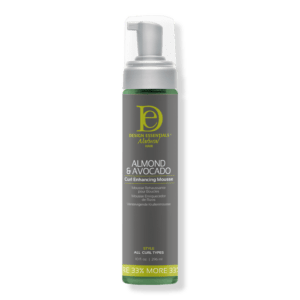
Design Essentials Almond & Avocado Curl Enhancing Mousse
 Prose Custom Styling Gel
Prose Custom Styling Gel
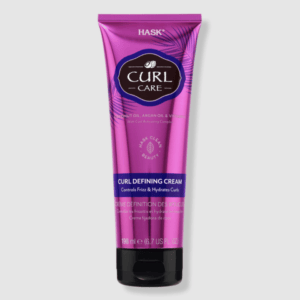 Hask Curl Care Curl Defining Cream
Hask Curl Care Curl Defining Cream
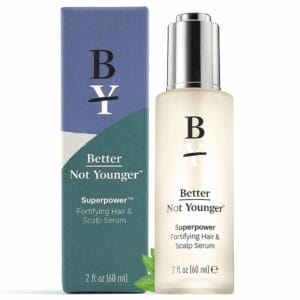 Better Not Younger Superpower Fortifying Hair & Scalp Serum
Better Not Younger Superpower Fortifying Hair & Scalp Serum
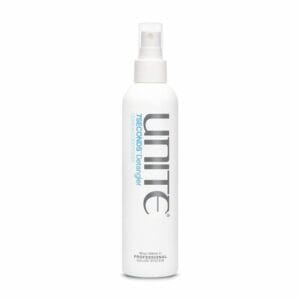 Unite 7Seconds Condition Leave in Detangler
Unite 7Seconds Condition Leave in Detangler
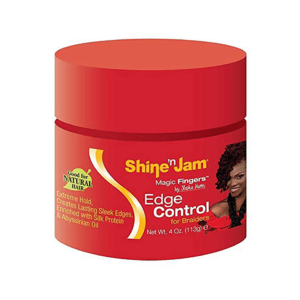 AmPro Shine-N-Jam Magic Fingers Edge Control Gel For Braiders
AmPro Shine-N-Jam Magic Fingers Edge Control Gel For Braiders
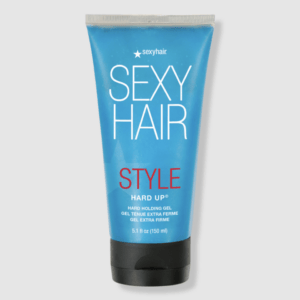 Sexy Hair Style Hard Up Hard Holding Gel
Sexy Hair Style Hard Up Hard Holding Gel
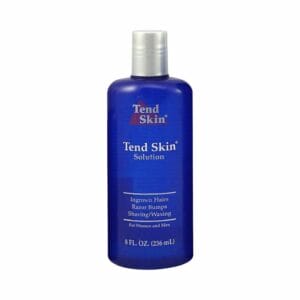 Tend Skin Solution
Tend Skin Solution
JH: Probably the most unexpected product wasn’t a “product” at all. It was more of a tool. The airbrush. The Talokanil appear blue when out of the water. The airbrush was instrumental in translating natural tones of the blue skin into what was essentially beauty makeup for our lead Talokan females. In addition to the blue skin tones, we also created facial jewelry and respirators for them once they are on dry land. All of these began as sculpted augmentations. They were ultimately transformed into silicone prosthetics finessed with dozens of layers of paint to achieve a realistic jade look. Everything was designed to accentuate the beauty and strength of our characters.
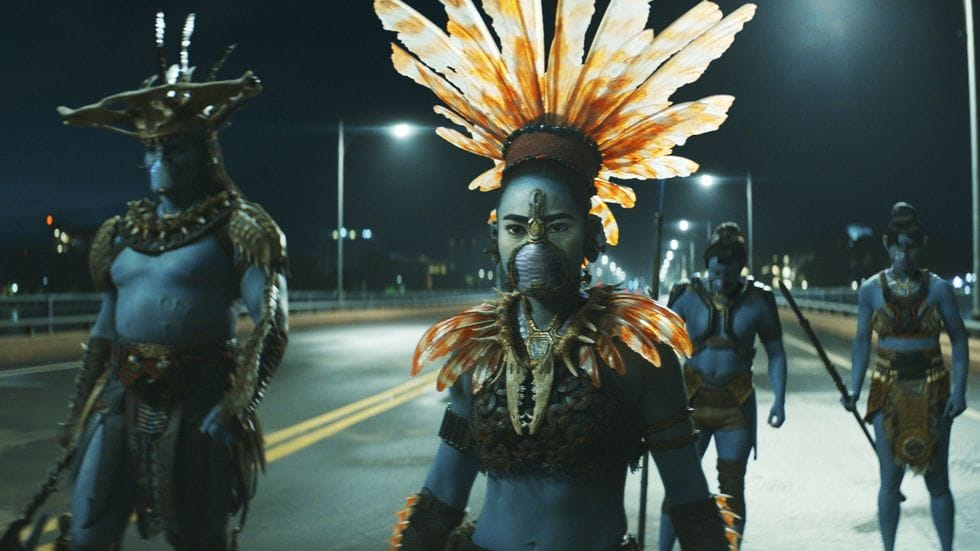
MARVEL STUDIOS
For the scenes that incorporate tribal-style hair what were some of your references/inspirations in the creation of these looks?
CF: For the Talokanil tribe, I designed the looks based on Mesoamerica and Mayan culture. We did research and spoke with a Professor of Mayan studies. I took great care in designing the looks for the Mayan culture; I always wanted the movie to be culturally correct. Also, for the Jabari tribe, I was inspired by Senegalese warrior looks.
JH: The inspiration was nothing more or less than the cultural looks of the various tribes of Africa. Taking these looks and exploring what they would evolve into given the introduction of vibranium is what resulted in the looks in the film. The main reference used was the two volume book African Ceremonies. Thais and the costumes were a big part of our inspiration.

MARVEL STUDIOS
How important was it to illustrate a wide variety of natural hair looks—from close cuts to braids and locs—on characters throughout the film?
CF: The representation of all hair types and textures is most important in the hairstory of the film. Wakanda Forever showcases “Black hairstyling” from traditional to modern trends. We have covered all of the culturally “Black hairstyles” in both movies.
Could you explain how some of the characters’ hair stylings (bold vs. more natural) translate to their overall personalities or roles in the movie?
CF: When designing the looks for actors, you always want your actor to be confident in the look. When the actor is confident in their look, it is the best feeling. Many actors rely on hair and makeup to transform themselves into their characters. In some cases, it’s the absence of hair that makes a bold statement, for instance the Dora Milaje are fierce warrior women that have no hair.
JH: Natural looks with the characters of Shuri and Riri, reflect their youth. Okoye, Ayo, Aneka, and the Dora Milaje have bold strong looks to reflect their strength and power. M’Baku’s bushy facial hair and tattoos are examples of the Jabari tribe. Namor is a variation of his look in the comic books but incorporates his culture with the addition of his jewelry and costume. Attuma is a warrior, his look personifies this. He is branded on his torso with a representation of shark teeth. His face is also pierced with smaller shark teeth. Namora, she is beautiful and strong, and her makeup reflects this quality.
How was hair and makeup used to illustrate the evolution of these characters?
CF: In Wakanda Forever, we use hair to show the passage of time. The character evolved from the first movie through a change of style, cutting, color, and texture. For instance, we see Nakia (Lupita Nyong’o) has grown her hair out into locs from the short bantu knots from the first film.
JW: We used makeup to evolve with each character by their current state and development within the film. We start this journey from a place of celebratory mourning for the loss of T’Challa and the makeup choices take this into account. As we continue, and Wakanda is threatened by an outside civilization, we are afforded the chance play with looks that speak to the strength of Wakanda and its people and leaders.
Whose look was the most difficult to achieve, and why?
CF: The Talokanil hairstyle isn’t difficult to achieve with a great hair team, but it was challenging to maintain hairstyles underwater. The wigs and hairpieces took a real beating being in the water for 10 hours a day.
JH: All of the Talokanil. Their “surface” makeup application took roughly three hours each. This included full body paint makeup, prosthetic gills and facial and neck prosthetic “rebreathers,” and digitally created ear jewelry painted to appear like blue jade.
Black Panther: Wakanda Forever opens in theaters on November 11, 2022.
– – – – – –
This story originally appeared in harpersbazaar.com


